コラム
落合憲弘
John Sypal
タカザワケンジ
なぎら健壱

A friend lent me this book last summer. He suggested that it might be a good one to write about for this column- I agreed, thanked him, and took it home. Not particularly familiar with- or even all that interested in- 1950’s illustrative LIFE Documentary Style photojournalism, I flipped through it once, quickly “got” its messaging, and set it aside for the next eleven months.
昨年の夏、友人が「このコラムにちょうどいいかもしれない」と、この『TOKYO』という古い写真集を貸してくれました。私は1950年代の『LIFE』誌のフォトジャーナリズムに特に詳しいわけでも、興味があるわけでもなかったので、一度パラパラとめくり、それから11か月間脇に置いてしまっていました。
It wasn’t until a few weeks ago (more on that later) that I realized its importance as was one of the first photobooks to attempt to show the realities and ideals of postwar Tokyo. The book was led by the editing of Yonosuke Natori, a pioneer in Japanese photojournalism. His direction involved the work of some 54 photographers with the Japan Professional Photographers Society (JPS), and resulted in a book with roughly 260 black and white images.
In scope, it follows the Steichen-produced MOMA show, “The Family of Man”, held to acclaim in 1955. In fact, like The Family of Man, TOKYO is a book which followed a photo exhibition: “Here you Live” organized by JPS and show in Ikebukuro in 1960.
つい数週間前、戦後の東京の現実と理想を表現しようとした最初の写真集のひとつであるこの本の重要性に気づくきっかけがありました。詳しくは後述しますが、この写真集は日本のフォトジャーナリズムのパイオニアである名取洋之助の編集のもとに作られました。日本写真家協会(JPS)に所属する約54人の写真家が参加し、約260点のモノクロ写真で構成されています。
この企画は、ニューヨーク近代美術館(MoMA)でエドワード・スタイケンがプロデュースし好評を博した「ザ・ファミリー・オブ・マン(人間家族)」展に続くものと考えられます。実は『人間家族』同様、『TOKYO』も写真展の後に出版されました。1960年に池袋で開催されたJPS主催の写真展「ここにあなたは住んでいる」をまとめた写真集なのです。
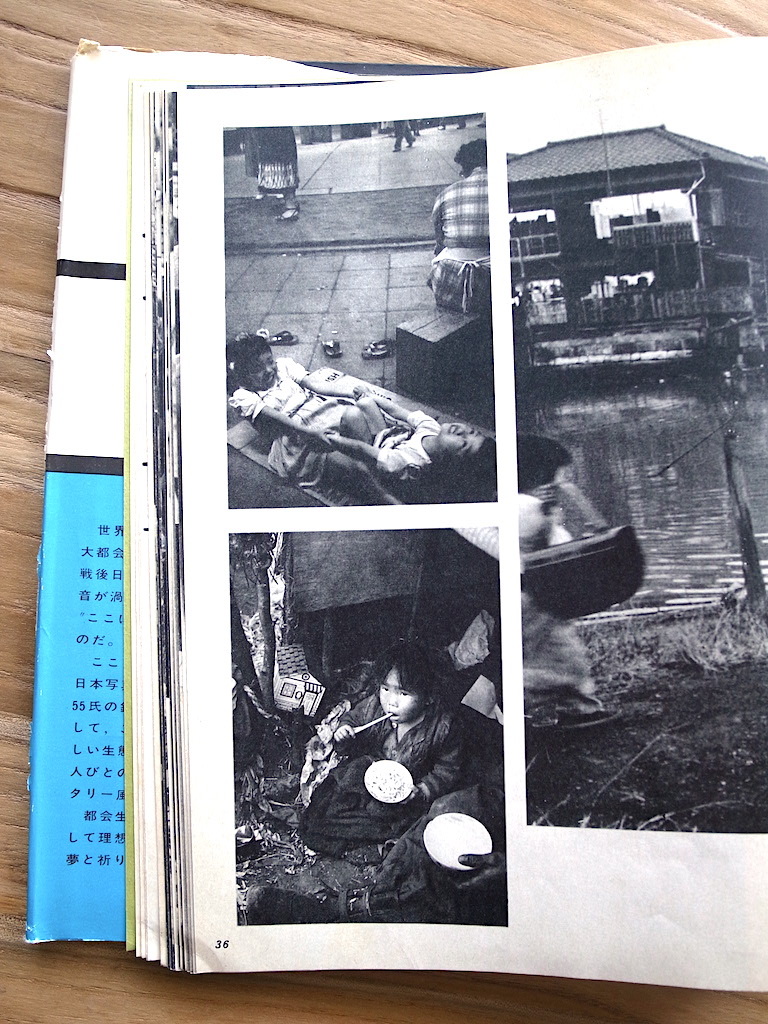
In TOKYO the major notes of modern life get double-page spreads- education, labor, pleasure, vice, tragedy, tradition, modernity, birth, death, love. The book’s title is that of a major metropolis- but rather than the city as subject its focus is life at the end of the first post-war decade.
教育、労働、快楽、悪徳、悲劇、伝統、現代性、誕生、死、愛。この「TOKYO」というタイトルは大都市を表していますが、主題は都市ではなく、むしろ戦後最初の10年の終わりにおける「東京人」だと思われます。
Many images fit the usual tropes of postwar Picture Magazine Journalism: salarymen crammed into trains, grainy nightclub dancers, congested roads and crowded streets (shot with a telephoto for that added visual compression gimmick)- in the city we’re shown both the frenzy of suited stock marketers at work and that of protesters in the streets. In foundries furnaces light the sooty faces of men shoveling coal- while on other pages lines of women run telephones or design dresses in fashion school. In parks couples act on their youthful passion (1950’s style), and later, in maternity wards, we’re shown bassinets of fresh babies (with names inked on their soles for identification). Life goes on- construction abounds, with new roads and new cars. Amongst the progress there’s room for (Weege-esque) house fires, floods, ambulance rides. Tokyo is populated by art students, children in muddy poverty, topless dancers in cabaret clubs, police cadets in pistol training sessions, vegetable sellers with towers of daikon radishes at market, and more sweaty laborers in boiling-hot factories working on the economic miracle. In the crime section a trip through heroin dens is made- a photo of a “fallen woman” with her tight, striped and unzipped dress no doubt titillated viewers for a few reasons. The pace doesn’t let up- in six pages we see the contorted faces of worshipers absorbed in new religious practices, make a stop at a morgue and funeral (death!), and then are thrust into a boisterous Shinto festival (life!).

さて、本のページを開いてみましょう。電車に詰め込まれたサラリーマン、ナイトクラブのダンサーたち、混雑した道路や雑踏(望遠で撮影され、映像圧縮のギミックが加えられていますね)。街ではスーツ姿の株式市場関係者の熱狂と、街頭でのデモ参加者の熱狂。鋳物工場では石炭を掘る男たちの煤けた顔を炉が照らし、別のページでは、電話をかける女たちの列や、ファッション学校でドレスをデザインする女たちの列が写されています。公園ではカップルが若い情熱を燃やし(1950年代風)、その後の産科病棟では生まれたばかりの赤ん坊のベッド、新しい道路や新しい車など、建設ラッシュと続いています。
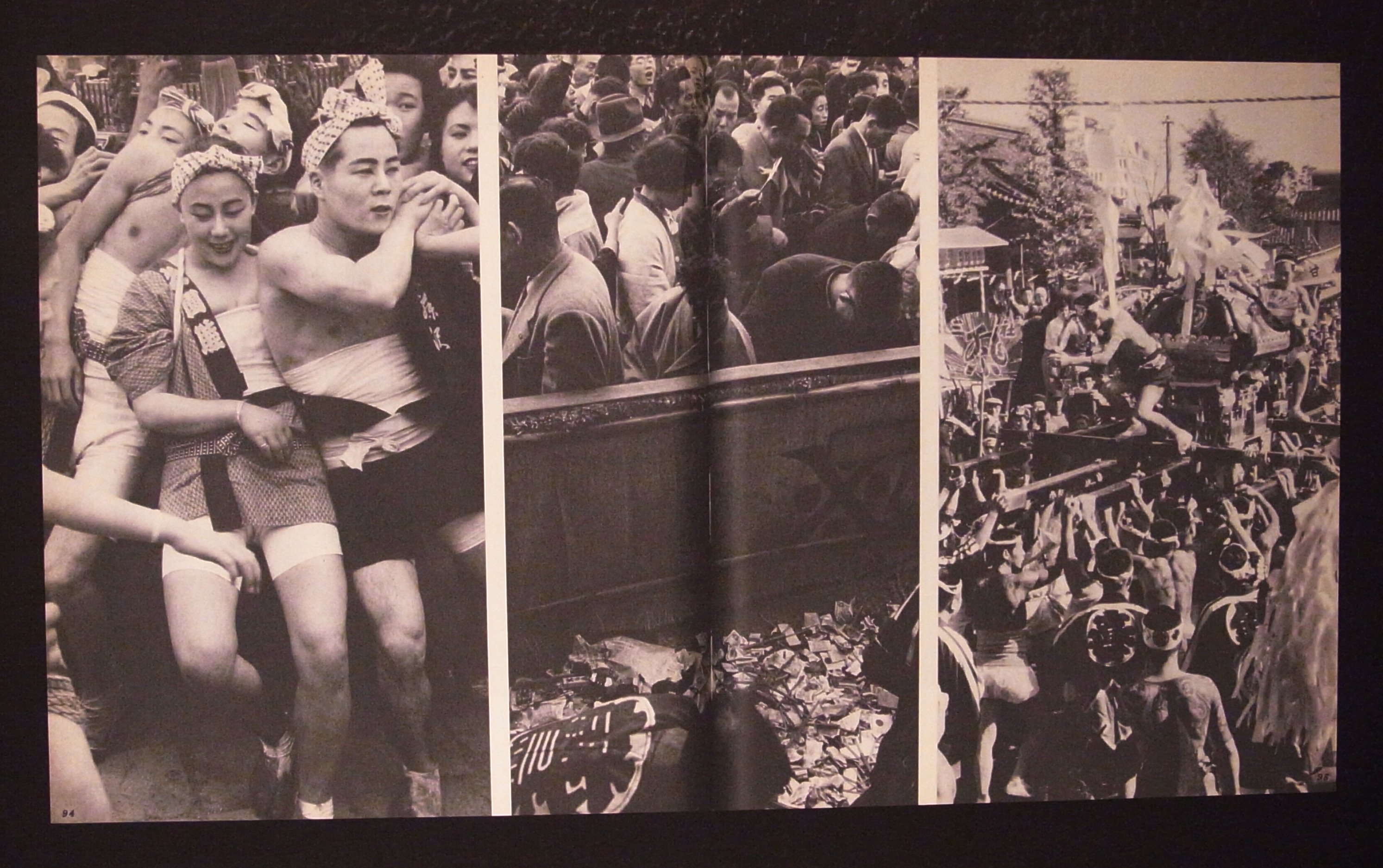
進歩の途中には家の火事や洪水、救急車も登場します。東京には美大生、泥だらけの貧困にあえぐ子供たち、キャバクラのトップレス・ダンサー、ピストル訓練中の警察官候補生、市場で大根のタワーを抱えた野菜売り、そして経済の奇跡に取り組む茹だるような暑さの工場で汗を流す労働者たちが住んでいます。ヘロインの巣窟も出てきます。
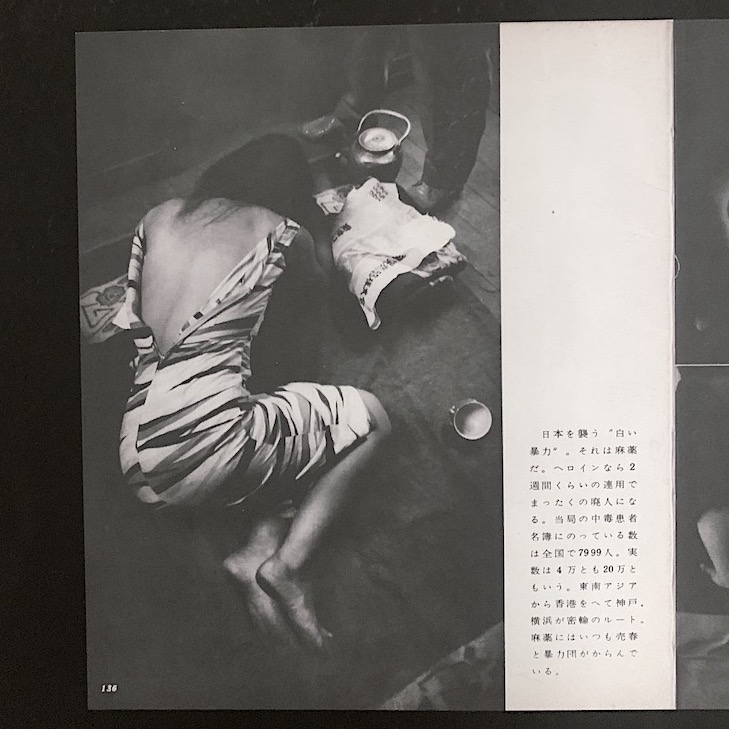
この本のテンポは止まりません。6ページにわたって、新しい宗教的慣習に没頭する参拝者たちの歪んだ顔、遺体安置所と葬儀という死、騒々しい神道の祭りという生を見せつけれます。
The book includes an introduction by Kenzo Nakajima and most of the pages are accompanied with a short narrative/contextual paragraph on their theme. While the photos are not individually captioned they are credited in a section at the back of the book.
本書には文学者・中島健蔵による序文が掲載され、ほとんどのページにそのテーマに関する短い文章が添えられています。写真に個別のキャプションは付されていませんが、巻末にクレジットが記載されています。

Of the 54 contributing photographers, Eikoh Hosoe, Shomei Tomatsu, Ihei Kimura, Nagano Shigeichi, and Yukichi Watabe are perhaps the most well-known. (Pictures from Watabe’s “Stakeout Diary” are his contribution to the book.) Each photographer’s images were at the mercy of the designer Ryuichi Yamashiro’s razor- most images have been heavily cropped to fit his crisp layouts. TOKYO is a document of its age, a collage of a city as a plotted, pictorial circus produced for a modern populace by the Asahi Newspaper company.
54人の写真家のうち、細江英公、東松照明、木村伊兵衛、長野重一、渡部雄吉が有名どころでしょう(渡部雄吉は『張り込み日記』の写真が掲載されています)。 各写真家の写真は、デザイナーの山城隆一の鮮明なレイアウトに合わせて大きくトリミングされています。『TOKYO』は、朝日新聞社が現代の人々のために制作した、絵に描いたようなサーカスとしての都市のコラージュであり、時代のドキュメントでもあります。
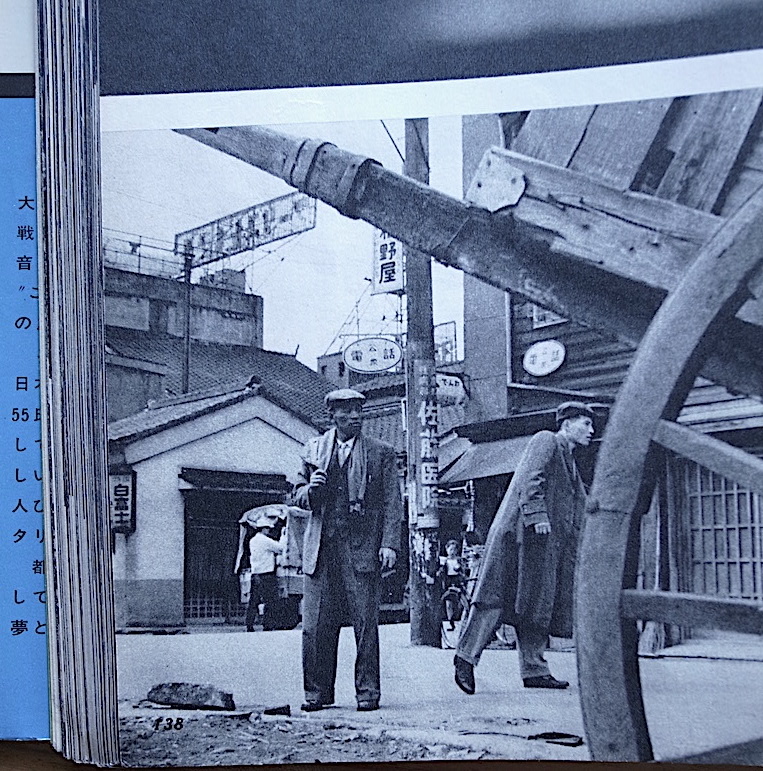
As I said, my initial encounter with the book was one of general interest but due to my own bias, not particularly engaging. The bias? I thought this was just another hardcover gravure-printed photojournalism compilation from the 60’s like all the others that take up shelf space in Jimbocho bookshops. My re-examination/re-evaluation of it came about from an exhibition at Intermediatheque, (http://www.intermediatheque.jp/en) a unique Natural History museum near Tokyo Station.
先に話しましたが、最初はこの本にあまり興味がもてませんでした。恥ずかしいのですが、この本も古本屋で棚を占領している他の本と同じように、カビくさいハードカバーのグラビア印刷された1960年代のフォトジャーナリズムの集大成に過ぎないと思っていたのです。私がこの本の魅力を知ったのは、東京駅近くのユニークな自然史博物館、インターメディアテーク(http://www.intermediatheque.jp)での展覧会がきっかけでした。
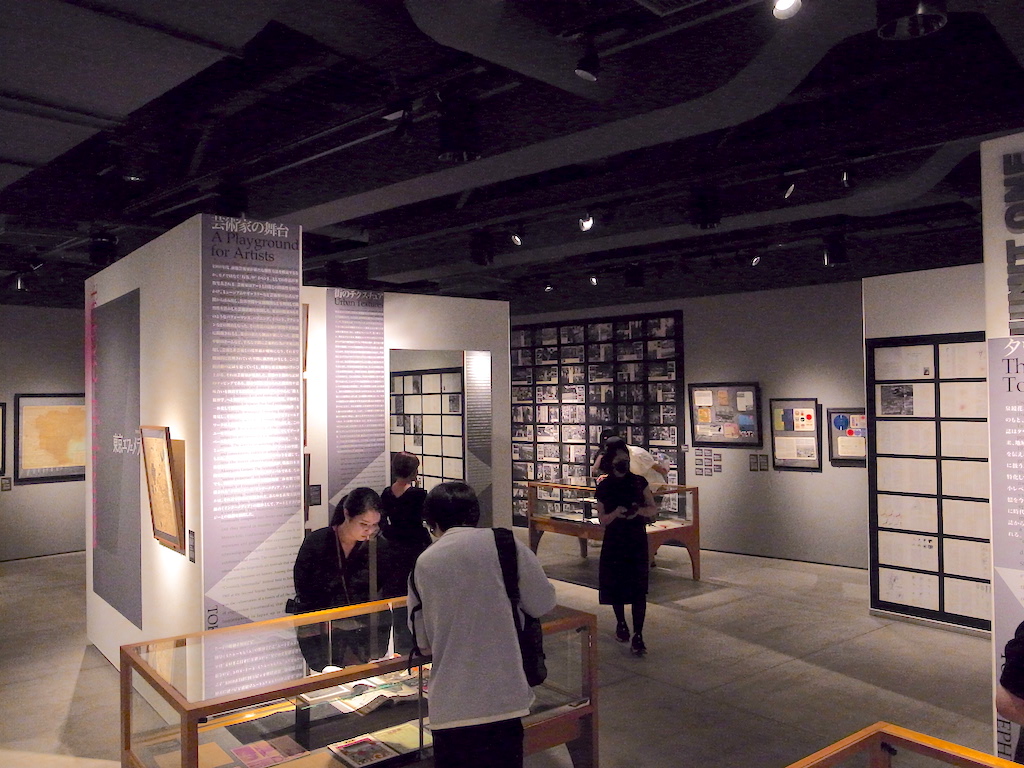
This exhibition, titled “Tokyo Ephemera”, was an extremely well curated collection of Print Culture which investigated the Idea, or images, of Tokyo from 1945 to today through posters, flyers, free papers, and photobooks. This one, in particular.
「東京エフェメラ」と題されたこの展覧会は、ポスター、チラシ、フリーペーパー、写真集などを通して、1945年から今日までの東京のイデア(イメージ)を調査した、プリント・カルチャーの極めて優れたキュレーション・コレクションです。その中でも、特に印象的だった一冊がこの本でした。

I was pleasantly surprised to see this book in a case. On one wall, its visual contents were on the wall in one large, tiled display.
ケースに入ったこの本を見て、私は嬉しい驚きを覚えました。壁一面にはビジュアルコンテンツが、タイル張りの大きなディスプレイで展示されていました。
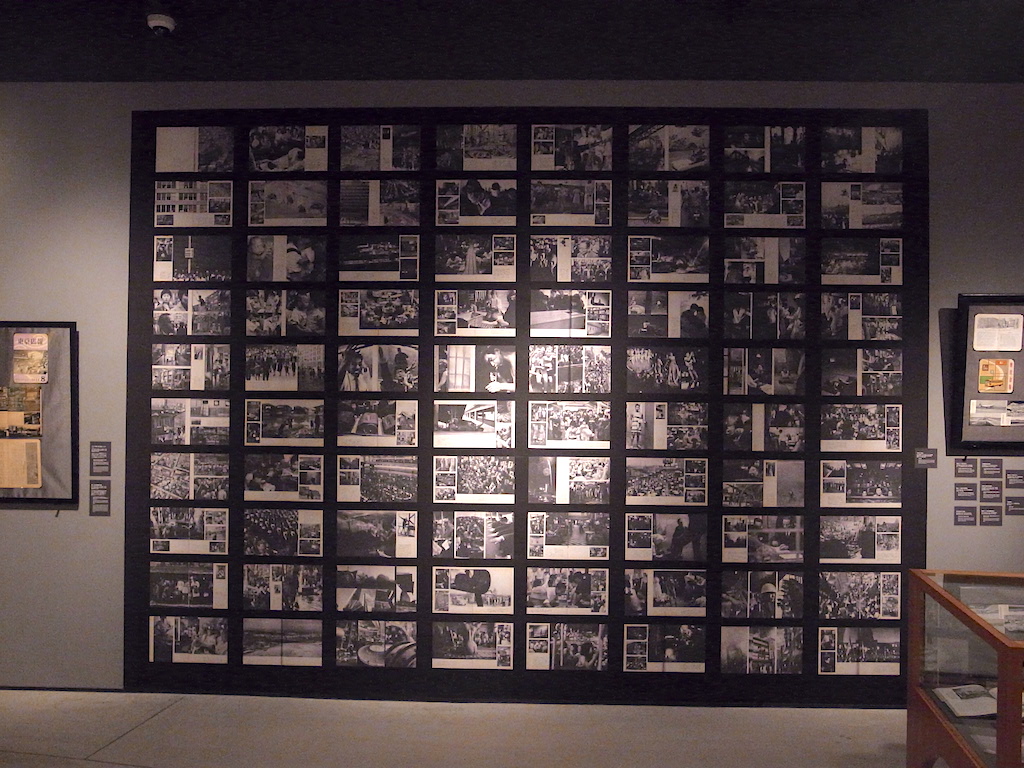
Experiencing this book as a massive monochrome collage this way opened my eyes and mind. Instead of dealing with pages, this “glimpse” of the then-city was a full-on deluge. The full breadth of the project was revealed.
本を巨大なモノクロームのコラージュとして体験することで、目と心が開かれたように感じました。当時の都市の「片鱗」が洪水のように流れ込んできて、プロジェクトの全容が明らかになったのです。
I’ll had back my borrowed copy of the book soon. I won’t miss it from my shelves, but, having given it the attention it deserves- and doing a bit of research online- my appraisal is higher now. TOKYO is a solid historical document of mid-Showa Tokyo, and one that helps provide context for photography- and the city- that would follow.
今まで借りていた『TOKYO』はそろそろ友人に返します。この本は、昭和中期の東京の確かな歴史的ドキュメントであり、その後の写真、そして東京の文脈というものを、見る人に感じさせる一冊です。

- "TOKYO" Edited by Yonosuke Natori
- publisher:Asahi Shimbun
year:1961
pages:173
size:H248×W213mm- 『東京』
- 編集:名取洋之助
- 序文:中島健蔵
- 文:梶谷善久
装幀:山城隆一(日本デザインセンター)- 出版社:朝日新聞社
刊行年 :1961年- 判型:248×213mm・173ページ・ハードカバー
- https://www.nitesha.com/?pid=141990965
 26 Duets? Duels? Near-overlaps of time and Space across Tokyo. 東京の時間と空間が重なり合う写真集ツアー
2025/04/04
26 Duets? Duels? Near-overlaps of time and Space across Tokyo. 東京の時間と空間が重なり合う写真集ツアー
2025/04/04
 25 Naoki Ishikawa "TOKYO The City Where I Was Born" 石川直樹『東京 ぼくの生まれた街』
2024/01/05
25 Naoki Ishikawa "TOKYO The City Where I Was Born" 石川直樹『東京 ぼくの生まれた街』
2024/01/05
 24 山内道雄 Michio Yamauchi『TOKYO UP CLOSE』
2023/10/20
24 山内道雄 Michio Yamauchi『TOKYO UP CLOSE』
2023/10/20
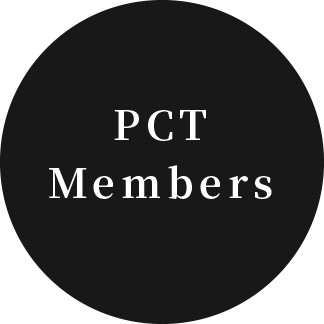

PCT Membersは、Photo & Culture, Tokyoのウェブ会員制度です。
ご登録いただくと、最新の記事更新情報・ニュースをメールマガジンでお届け、また会員限定の読者プレゼントなども実施します。
今後はさらにサービスの拡充をはかり、より魅力的でお得な内容をご提供していく予定です。
 「Photo & Culture, Tokyo」最新の更新情報や、ニュースなどをお届けメールマガジンのお届け
「Photo & Culture, Tokyo」最新の更新情報や、ニュースなどをお届けメールマガジンのお届け 書籍、写真グッズなど会員限定の読者プレゼントを実施会員限定プレゼント
書籍、写真グッズなど会員限定の読者プレゼントを実施会員限定プレゼント